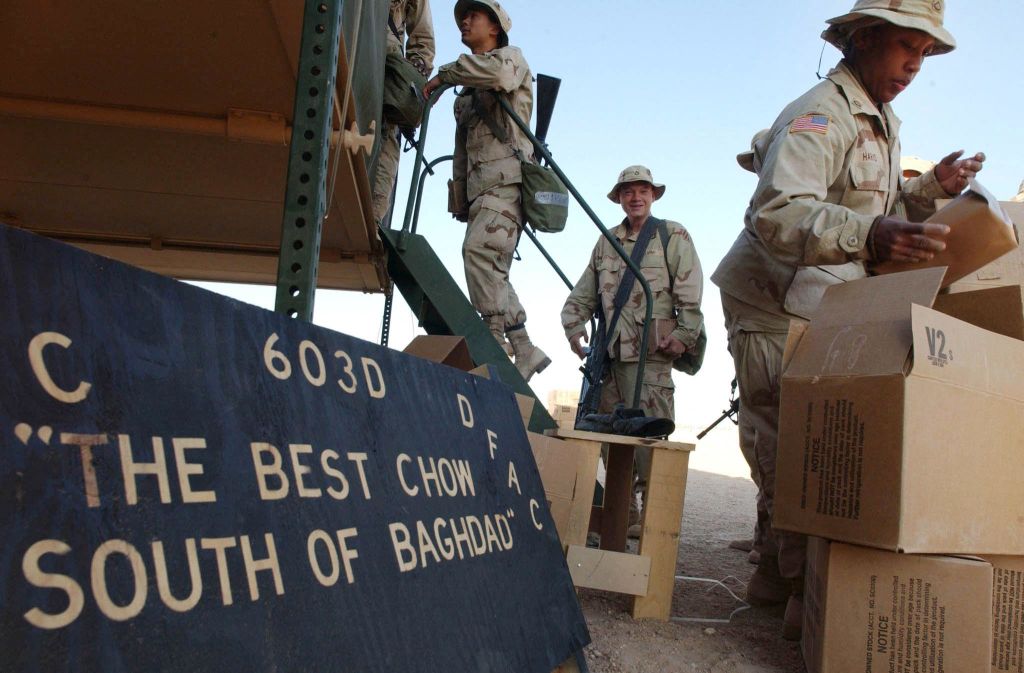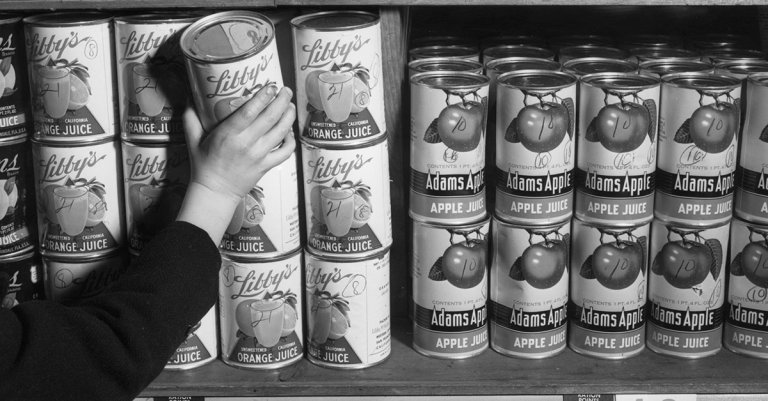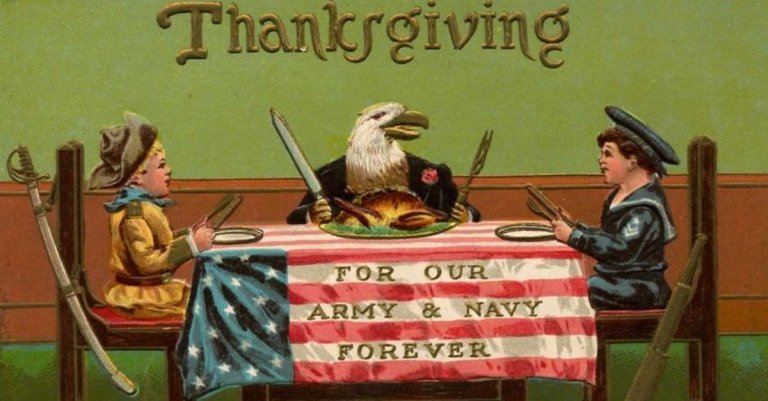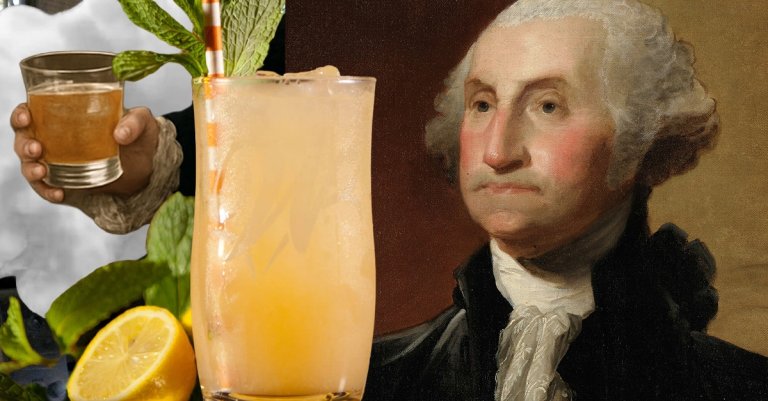

Is your fridge full of convenience foods that are prepackaged and ready to eat? Well, you have the military to thank for that. Let’s crack open the canned history of military meals in America and savor the surprising ways it has influenced our everyday eats. From MREs (Meals, Ready-to-Eat) to instant coffee, the military’s need for nutritious, long-lasting, and easy-to-transport food has given us some unexpected culinary contributions.
What were the first military rations?
Now, let’s yank those rose-tinted glasses off and plunge into the gritty reality of the late 18th-century military diet. Imagine you’re a soldier in the fledgling American military, stuck out on the wild frontier. Your culinary companions? Salt pork and hardtack. Sounds exotic? Not quite. These items were as luxurious as a brick sandwich.
Curing pork belly in salt yields salt pork, a tough, salty meat that gives your jaw a workout. On the other hand, hardtack doesn’t present as a warm, fluffy treat; it’s a hard biscuit. Made from flour, water, and salt, this austere biscuit bakes into a rock-hard, tooth-breaking consistency that laughs in the face of spoilage.
Rather than making a gourmet feast, the selection of these staples depended on their ability to resist decay in an era before you could crack open your fridge and grab a cold one.
What food did soldiers eat in the Civil War?
As we surge ahead to the Civil War, a new food tech champion takes center stage. No, we’re not talking about fridges on the battlefield. We’re talking about canned food. It’s hard to imagine our pantries without a few cans of soup, vegetables, or meat, isn’t it? Well, that’s where our military ancestors come in. They were the guinea pigs for this revolutionary concept.
Civil War soldiers were the first American troops to receive canned field rations on a large scale. The rudimentary canning process of the time involved packing food into tins, sealing them, and then boiling them to kill bacteria. While not exactly Michelin-starred cuisine, canned goods brought an unprecedented variety and, yes, a semblance of freshness to the military plate. Think canned meat, veggies, and even condensed milk.
Post-war, the canned food idea didn’t just meander its way into civilian life; it cannonballed right into the middle of it. As canning technology improved, this handy form of preserving food became a kitchen staple for civilians across America. It was an early example of military tech making civilian life a smidge easier and tastier.

How did people store food during World War II?
Let’s turn up the heat and sauté ourselves into World War II. Here’s where the military’s kitchen boffins went into culinary overdrive. With the daunting task of nourishing millions of soldiers efficiently, they cooked up innovations that were nothing short of revolutionary.
World War II marked the advent of dehydrated, processed food items designed to provide maximum nourishment while taking up minimal space and requiring little preparation. The concept of ‘fast food’ was born on the battlefield. Instant coffee, powdered juice, and ready-to-eat meals made their debut, offering troops a taste of home even in the harshest conditions.
Imagine, at the break of dawn, a soldier could just tear open a packet, add water, and voila – hot coffee to kickstart the day. And let’s not forget the ready-to-eat meals – compact, long-lasting, and quick to prepare. No fridge necessary. These meals didn’t just fill a stomach. They almost served as a comforting taste of home in an otherwise alien and hostile environment. Almost because, let’s be honest… the early rations probably didn’t taste that great.
After the war, these convenient edibles didn’t just return home with the soldiers; they waltzed right into civilian life. This marked the start of our love affair with instant and fast foods. Next time you’re annoyed that your ramen is taking an entire 90 seconds to cook … think about it. These quick meals have so much history, brought to you by the military.
Popping into modern times
In the aftermath of World War II, the military’s culinary escapades turned frosty. Frozen food, initially devised as an improved version of field rations, sparked a revolutionary idea in the civilian world: TV dinners. What started as meals for soldiers would lead to the iconic tray of Salisbury steak, mashed potatoes, and green beans, forever altering the dinnertime landscape of the American household.
And that’s not all. American fridges across the country started to see some changes, too, as the country started to want more convenience and to spend less time in the kitchen. In an interesting twist of fate, the military’s high-energy survival bars—designed to sustain soldiers in grueling conditions—would eventually morph into the granola bars we munch on today. And don’t forget the hydrating beverages, the ancestors of our energy drinks.
Gatorade, for example, was first developed for the University of Florida’s football team in the 1960s. However, its use in hydrating soldiers in high-heat environments, particularly during the Gulf War, set the stage for its subsequent widespread adoption in civilian life.

MREs and modern military cuisine
The military food scene today is practically gourmet compared to its origins in the 18th century. Meal, Ready-to-Eat (MRE) packets represent the apex of military food technology. Each packet is a Pandora’s box of nutrition, variety, and decently palatable food crammed into a small, rugged package.
Consider the options available to modern soldiers: Tortellini, beef stew, chicken curry, and yes, even dessert. There’s a smorgasbord of dishes, right from cheese tortellini with marinara sauce to Mexican-style chicken stew. How about a little carrot pound cake or maple muffin top for dessert? Even the pickiest eaters would find something to satisfy their cravings.
But we all know lots of MREs leave plenty to be desired. Some options, like the infamous omelet or “vomelet” (as it’s affectionately called), haven’t exactly won the hearts and stomachs of … well, anyone. Other choices, like the rice and beans, aren’t so bad. But even with these less appetizing options, MREs are a far cry from the hardtack and salt pork of yore.
The fridge crossover
As we glance over our pantry shelves or fridge contents, it’s apparent that the military’s influence on our food extends beyond the battlefield. Their kitchen innovations have infiltrated our own kitchens and entrenched themselves in our daily routines.
Canned goods? A relic of the Civil War. Instant coffee and fast food? Imported straight from World War II. Ready meals? They’re just a domesticated version of the modern MREs. Think about MREs like the no-need-for-fridges edible bites of culinary history.
And the story isn’t over yet. The future of military food, as outlined in a report by the Natick Soldier Research, Development and Engineering Center, envisions nutritionally personalized meals, 3D-printed food, and even nanotechnology-enhanced rations. These innovations could dramatically shape our future civilian cuisine, continuing the trend of military food marching its way into our kitchens.
A salute to military grub
In the end, whether we’re a foodie or a fast-food aficionado, we all owe a nod to the military’s influence on our food landscape. So, the next time you pop a frozen dinner in the microwave or sip your instant coffee, take a moment to remember its roots in the mess halls and battlefields of yore.
From hardtack to MREs, military food has shaped not only the stomachs of soldiers but the eating habits of a nation. Who knew that the path to our pantries was paved by the boots of the brave? And that, folks, is a tasty tidbit of food history to chew on.
Bon appétit!





